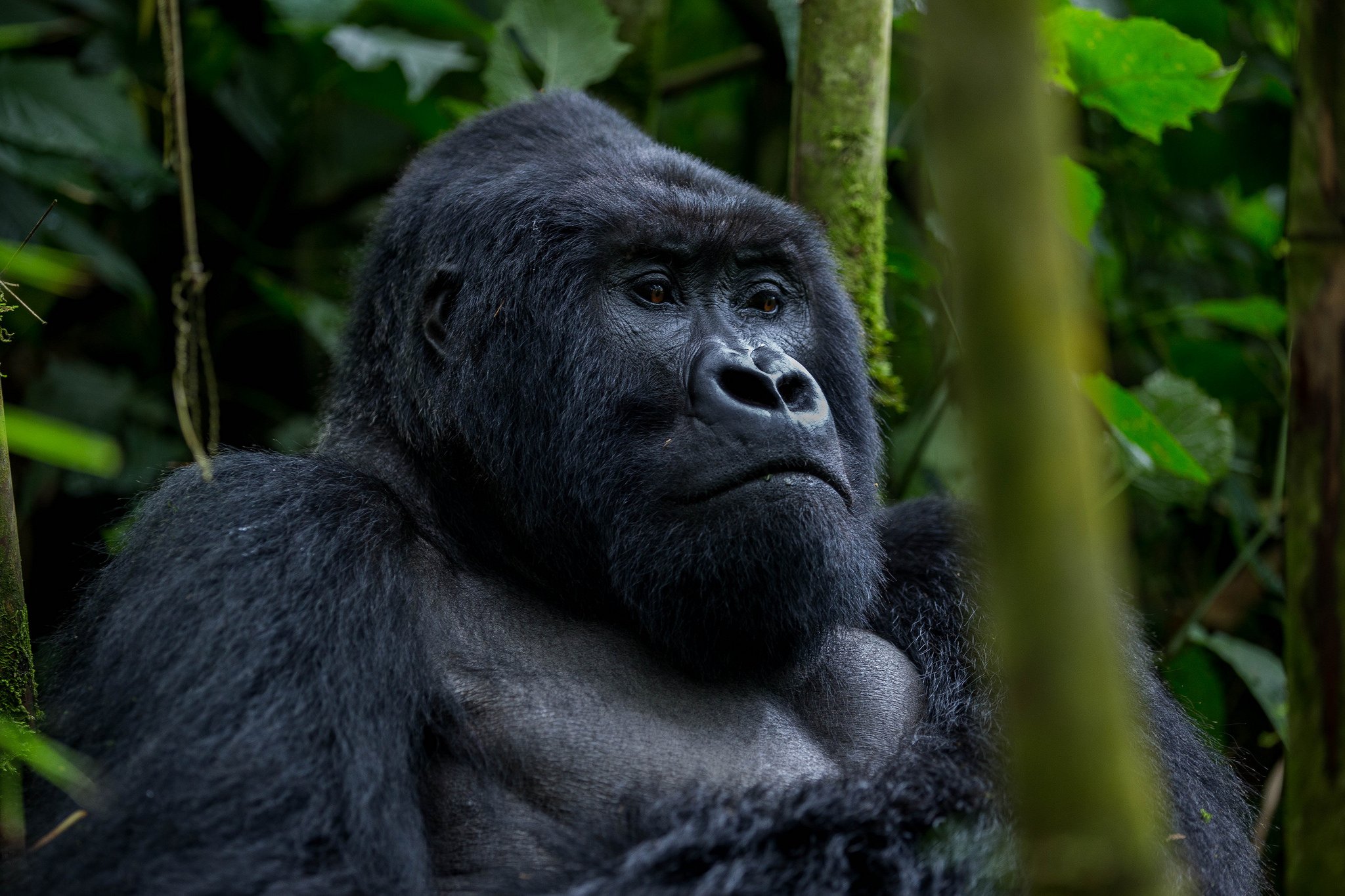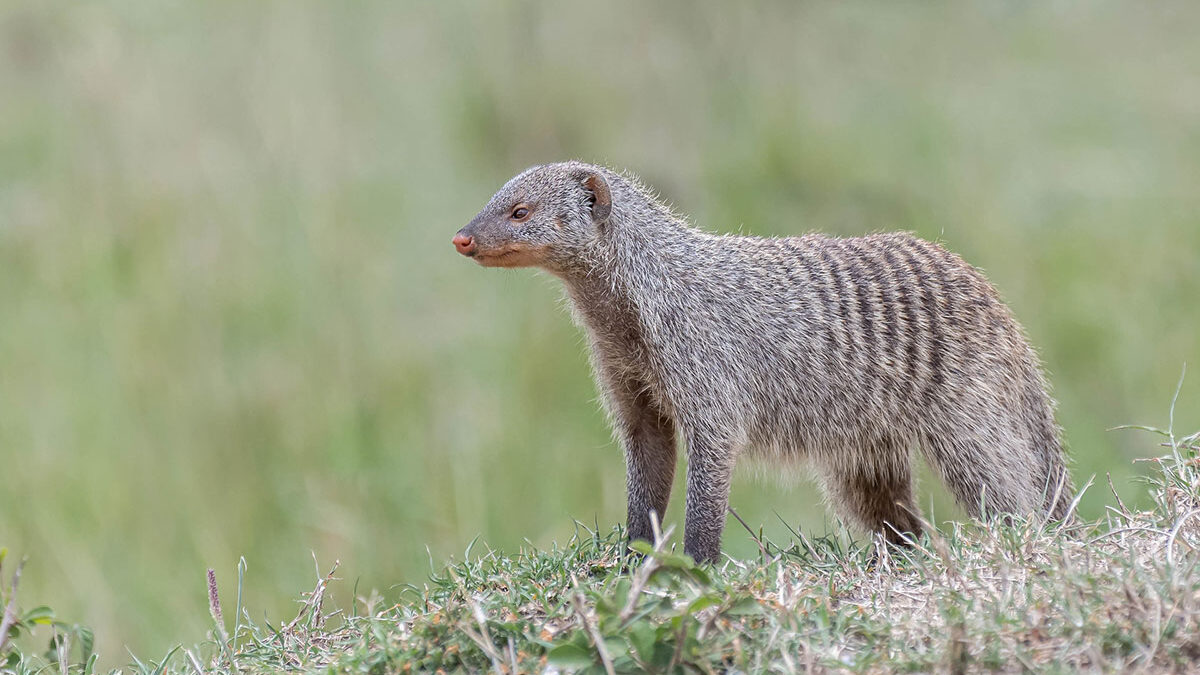
What Temperatures Can You Expect for Gorilla Trekking in Uganda?
April 2, 2025
Top Luxury & Mid-Range Lodges Near Volcanoes National Park
April 3, 2025Best Places to See Mongooses in Kenya: A Guide to Spotting these Fascinating Creatures
Kenya is not just home to the iconic Big Five; it’s also a fantastic place to observe some of the most unique and lesser-known animals, including mongooses. Both bushy-tailed mongooses and banded mongooses call Kenya home, and they can be found in various habitats, from the savannah to the open plains of the Masai Mara. If you’re keen on spotting these charming creatures during your safari, here’s where you can find mongooses in Kenya, along with tips on the best time to visit and where to stay.
Why Kenya is a Great Place to See Mongooses
Mongooses are small, social creatures that are often seen in groups called mobs. They are highly active and curious, making them fascinating to observe in the wild. In Kenya, banded mongooses (Mungos mungo) are more commonly found in open savannahs, whereas bushy-tailed mongooses tend to prefer more wooded areas. Their inquisitive nature and ability to adapt to various environments make them an exciting addition to any wildlife safari.
One of the best places in Kenya to spot mongooses is the Masai Mara National Reserve, but there are other regions too where you can find these adorable mammals.
Best Places to See Mongooses in Kenya
Masai Mara National Reserve
The Masai Mara National Reserve is world-renowned for its incredible wildlife, including the Great Migration. However, it’s also an excellent place to spot mongooses. These creatures are often seen foraging in the open plains alongside other animals like wildebeests, zebras, and gazelles.
The Mara Reserve offers an excellent opportunity to see banded mongooses in their natural habitat, particularly in areas where they forage for food or seek shelter under the shade of the trees.
Best time to see mongooses in Masai Mara:
The peak season between July and October coincides with the Great Migration, making this a prime time for not only spotting mongooses but also witnessing the migration of millions of wildebeests, zebras, and other wildlife. Early November and February are also great months for game viewing, including sightings of mongooses.
Amboseli National Park
Amboseli is famous for its breathtaking views of Mount Kilimanjaro and large elephant herds, but it’s also home to mongooses. In this park, you can find both banded mongooses and bushy-tailed mongooses in the grasslands and acacia woodlands. The park’s varied landscapes provide excellent opportunities to spot mongooses in different environments.
Tsavo National Park
The Tsavo National Park, one of Kenya’s largest and most diverse national parks, is another fantastic place to see mongooses. The park’s variety of ecosystems, from savannahs to forests, offers mongooses a wide range of habitats to thrive in. The park is home to bushy-tailed mongooses, which are commonly seen in the park’s more wooded areas.
Lake Nakuru National Park
While Lake Nakuru is most famous for its flamingo populations and rhino sightings, it also offers opportunities to spot mongooses. These curious creatures are often found foraging along the lake’s grasslands and wooded areas. Banded mongooses in particular are often seen in this region.
Samburu National Reserve
Located in northern Kenya, the Samburu National Reserve offers a different perspective on Kenya’s wildlife. Known for its arid landscapes and unique wildlife, Samburu is home to several species of mongoose, including bushy-tailed mongooses. These creatures are often seen foraging for food in the dry, open savannahs of the reserve.
Best Time to See Mongooses in Kenya
As with many wildlife sightings, the best time to see mongooses in Kenya is during the dry season when animals gather near water sources. However, July to October during the Great Migration is particularly exciting because mongooses can often be seen in the midst of the wildlife action.
Early November and February are also great times for wildlife viewing, as animals are more active and the vegetation is not as thick, making it easier to spot mongooses and other wildlife.
How to Get to the Masai Mara National Reserve
There are several ways to reach the Masai Mara National Reserve from Nairobi or other parts of Kenya:
-
By Road: The C12 road takes you from Narok to Keekorok, and then into the Mara Triangle, passing through scenic views of the Kenyan countryside. Alternatively, the C13 road goes from Bomet to Narok and on to Ngorgori Junction.
-
By Air: For a quicker journey, you can take daily flights to Serena Airstrip, Kichwa Tembo Airstrip, or other nearby airstrips like Keekorok, Oliombo, and Musiara, which are all close to the park.
Where to Stay in Masai Mara National Reserve
The Masai Mara offers a wide range of accommodations to suit all budgets. From luxury lodges to mid-range hotels, here are some great options:
-
Luxury:
-
Little Governors’ Camp
-
Mara Intrepids Camp
-
Sarova Mara Game Camp
-
Mid-range:
-
Keekorok Lodge
-
Mara Explorer Camp
-
Budget:
-
Mara Camp
-
Mara West Camp
-
You can choose accommodations based on your preferences and budget. Whether you’re looking for a lavish stay with panoramic views or a cozy, budget-friendly lodge, there are plenty of options to enjoy your time in the Mara.
How to Book a Safari in Kenya
Booking a safari trip to Kenya to see mongooses and other wildlife is simple. At Trek Africa Expeditions, we offer tailored safaris to meet your interests and budget. Here’s how the booking process works:
-
Contact Us: Let us know your preferred travel dates, and we’ll check availability for your safari.
-
Draft Itinerary: We’ll provide a draft itinerary based on your interests.
-
Secure Your Spot: Once the itinerary is confirmed, we’ll send an invoice and secure your bookings once the deposit is made.
-
Finalize Details: We will handle the rest, including permits, accommodation, and transport.
It’s recommended to book at least 2-3 months in advance, especially if you’re planning to travel during the peak season (June to October).
Kenya Tourist Visa
You will need a tourist visa to visit Kenya, which can be obtained online for a fee of USD 51. It’s recommended to apply for your visa before traveling, though it can also be issued upon arrival.
Why Book with Trek Africa Expeditions?
At Trek Africa Expeditions, we create eco-friendly and unforgettable safari experiences in Kenya. Whether you’re looking to see mongooses, the Big Five, or other wildlife, we offer a variety of safari packages tailored to your preferences.
We’re known for providing high-quality, sustainable safari experiences that promote wildlife conservation and benefit local communities. Our itineraries are designed to create lifelong memories while also supporting the preservation of Kenya’s stunning biodiversity.
Feel free to contact us for more details or to book your safari to Kenya to see mongooses and more!

